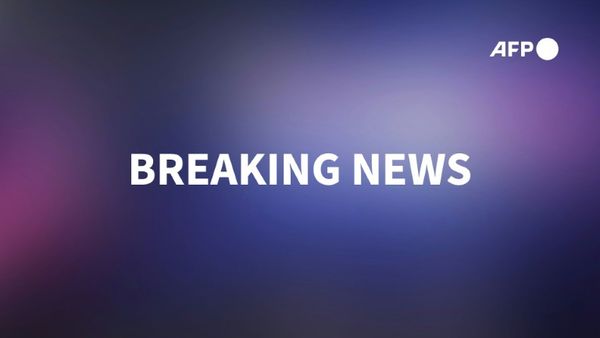
Support truly
independent journalism
There was something sadly fitting about the way it ended. Jadon Sancho’s final kick of a ball in a Manchester United shirt was a missed opportunity that came at a cost: the rather tame penalty that Ederson saved in the Community Shield shootout. Perhaps it was a microcosm of a United career that is, in effect, now over.
Sancho was omitted from the 20-man matchday squads for the games against Fulham and Brighton. He completed a move to Chelsea on Saturday, so late it felt like a deadline-day afterthought. It is a loan but with an obligation to buy for £20-£25m. After a mere 83 games, just 12 goals and only six assists, Sancho now forms part of United’s past.
The numbers indicate the scale of the failure, footballing and financial. In effect, United will lose some £50m on the transfer fee they paid, with Borussia Dortmund’s contribution to Sancho’s loan last season largely covering his wages and part of his salary now still being paid at Old Trafford. They have written off bigger sums – the world-record signing Paul Pogba departed on a free transfer – and may have to again, given that Antony cost still more than Sancho – but it is about the football pitch as well as the balance sheet.
And Sancho’s last two competitive appearances have come at Wembley. In the first, he started a Champions League final for Dortmund, fresh from a man-of-the-match display in the semi-final. After a cameo for United – less than some expected, after there was a possibility Sancho could start as a false nine – came confirmation of his place in Ten Hag’s pecking order.
Sporting director Dan Ashworth underlined it on Sunday: “We’ve got four really good wide players, Jadon was a fifth.” It put him behind Antony, among others. It illustrated the duality of Sancho, Dortmund wunderkind turned fifth-choice winger for the club who came eighth last season. Sancho was Dortmund’s flagship sale in 2021. Comparisons can be made with his counterparts in 2022 and 2023, Erling Haaland and Jude Bellingham, and the heights they have subsequently scaled.
When transfers go wrong, perhaps it is cruel to revisit the initial optimism. Such quotes do not tend to age well. But go back to 2021 and Ole Gunnar Solskjaer said: “Jadon epitomises the type of player I want to bring to the club - he is a forward player in the best traditions of Manchester United. He will form an integral part of my squad for years to come.” It was scarcely Solskjaer’s squad for months to come, let alone years.
There was the Norwegian’s infamous admission that he signed Sancho to play on the right, only to discover the winger himself preferred the left. There was the destabilising effect of Cristiano Ronaldo’s return, which benefited none of the other attackers as they were shunted around to accommodate him. Of the four United managers – of sorts – during his time, Sancho arguably performed best for the two short-term appointments, Michael Carrick and Ralf Rangnick. He was not quick enough to be an Erik ten Hag winger (with the caveat that the Dutchman thinks Antony is fast, but few others agree). It felt like another illustration that United had acquired attackers without a strategy to suit all. And if United never quite worked out what Sancho was, Ten Hag’s verdict that he was worse than the abject Antony may have constituted too great an insult.
Sancho appeared for United in four seasons but only one full campaign, given that he spent three months away from the side in the middle of 2022-23. In both this season and last, August brought his last appearance for them: now because he joined Chelsea, 12 months earlier because Ten Hag’s decision to omit him from the squad for the defeat to Arsenal and to go public with his reasoning, followed by Sancho’s suggestion the manager was lying, backfired.
If fault could be found on both sides, there is scarcely any sense United benefited from Ten Hag’s inflexibility. His stubbornness as he talked about “standards” brought precious little evidence they were improved by exiling Sancho for four months while neither backed down and before he headed back to Dortmund; the manager’s moral compass, meanwhile, meant some offences were deemed more serious than others.
The summer rapprochement that brought Sancho’s brief reappearance in United colours was never fully explained; jettisoning him from the squad even when Rasmus Hojlund’s injury left Ten Hag short of one attacker suggested it was a temporary truce and he was directing the forward towards the exit. “We’re not in a position where we’re kicking players out of the club,” Ashworth argued. “It was a decision that we made – if it’s right for Jadon and [if] it’s right for us to move on.”
It may be right simply because the situation has been so wrong. Perhaps Sancho’s plan was to outlast Ten Hag but he has not. Certainly United hoped to raise £40m by selling him this summer, but they will get barely half that. Sancho is a boyhood Chelsea fan who admired Frank Lampard but the lesson of his career is that he needs to be in an environment that suits him; Dortmund, under Edin Terzic’s supportive management and where they forgave him for his lapses with timekeeping, was a case in point.
Chelsea, who have still more wingers than United, who have just made Raheem Sterling persona non grata for the apparent crime of earning too much and who change manager with far greater frequency, scarcely looks the ideal antidote to Old Trafford. United may take the view that selling Sancho to a club as dysfunctional as Chelsea reduces the resident risk he returns to the level that brought him 50 goals and 57 assists in just 137 games during his first spell at Dortmund, that made him a £73m player or, indeed, that made him a Champions League finalist a few months ago. They might think Sancho is someone else’s problem now; but there is scope for embarrassment if he performs in such a way to become an indictment of them and add to the damage of the monetary shortfall.







